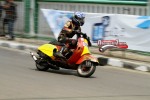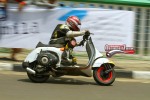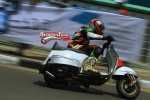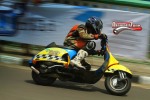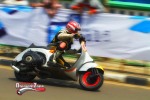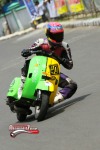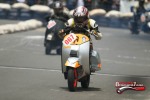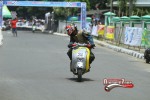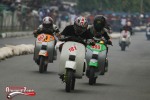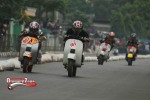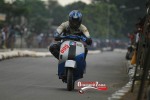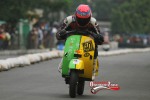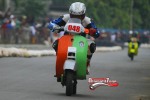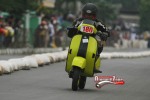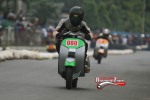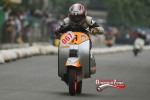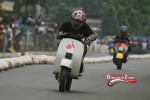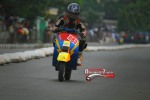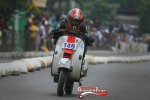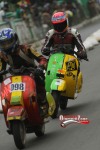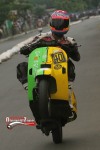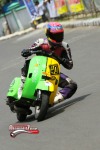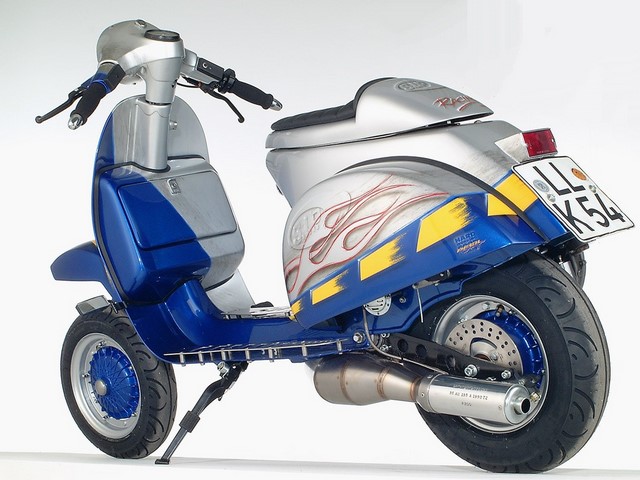Free Template Blogger collection template Hot Deals BERITA_wongANteng SEO theproperty-developer
Vespa Racing
Jumat, 15 Maret 2013
Diposting oleh
Kukuh Timet
di
18.43
0
komentar
Kirimkan Ini lewat Email
BlogThis!
Berbagi ke Twitter
Berbagi ke Facebook

Gallery Vespa Racing Jabar : Ziza KAC Road Race

Skutikzone.com-Bandung. Tetap bertahannya balap vespa di Jawa Barat karena tumbuh dan berkembang seiring dengan pertumbuhan club atapun komunitas skuter/vespa Jabar yang mencapai puluhan ribu orang anggotannya…
Filosofi Vespa yang kalau bahasa kita seh “Lebah”, karakter yang tenang dan santun dan memberi kedamaian, tapi akan menyerang untuk membela diri apabila merasa terancam ataupun disakiti…
Makanya sampe kapanpun Vespa racing akan terus berkembang. Baik berjalan dengan kegiatan balap over all maupun akan bikin event sendiri apabila keinginan komunitas balap scooter tidak terakomodir…naah….Vespa juga bisa OMR ko coyy…(edi)
Free Template Blogger collection template Hot Deals BERITA_wongANteng SEO theproperty-developer
Diposting oleh
Kukuh Timet
di
18.41
0
komentar
Kirimkan Ini lewat Email
BlogThis!
Berbagi ke Twitter
Berbagi ke Facebook

Modifikasi Vespa Guardian Uye
 Banyak
kita jumpai mas Dab lan mbak Yu,… modifikasi yang dilakukan pada motor
lawas ini. Biasanya dimodifikasi model ratstyle. Yup, genre yang cukup
populer saat ini… motor vespa dibuat sekumuh mungkin. Stang model ape
hanger yang kelewat tinggi
Banyak
kita jumpai mas Dab lan mbak Yu,… modifikasi yang dilakukan pada motor
lawas ini. Biasanya dimodifikasi model ratstyle. Yup, genre yang cukup
populer saat ini… motor vespa dibuat sekumuh mungkin. Stang model ape
hanger yang kelewat tinggi  Tapi
modifikasi kali ini jauh berbeda, jauh dari kesan kotor maupun kumuh.
Tapi sangaaar, layaknya perisai, motor ini hampir full metal. Full
custom mas Dab lan mbak Yu… Dibuat oleh Cris Cofitis, seorang seniman
patung / pemahat. Layak diacungi jempol karena identitas vespa sebagai
motor lawas masih ada. Sangat jelas, orang pasti tau kalau itu adalah
motor vespa.
Tapi
modifikasi kali ini jauh berbeda, jauh dari kesan kotor maupun kumuh.
Tapi sangaaar, layaknya perisai, motor ini hampir full metal. Full
custom mas Dab lan mbak Yu… Dibuat oleh Cris Cofitis, seorang seniman
patung / pemahat. Layak diacungi jempol karena identitas vespa sebagai
motor lawas masih ada. Sangat jelas, orang pasti tau kalau itu adalah
motor vespa. Nah
dari part metal inilah dibuat sebuah karya seni. Dari yang full chrome
sampai yang dipoles dengan alur tertentu sehingga terlihat seperti
motif. Juooos tenan, bener – bener mempertimbangkan faktor balance
antara seni dan mekanik. Panel – panel ditata rapi, detail dek tempat
pijakan kaki, sampai cover mesin kiri kanan dibuat eye catching. Wooow
aja g cukup neh…
Nah
dari part metal inilah dibuat sebuah karya seni. Dari yang full chrome
sampai yang dipoles dengan alur tertentu sehingga terlihat seperti
motif. Juooos tenan, bener – bener mempertimbangkan faktor balance
antara seni dan mekanik. Panel – panel ditata rapi, detail dek tempat
pijakan kaki, sampai cover mesin kiri kanan dibuat eye catching. Wooow
aja g cukup neh…  Last, inilah karya seni. Lebih cocok dipajang dimuseum daripada dikontes modifikasi…
Last, inilah karya seni. Lebih cocok dipajang dimuseum daripada dikontes modifikasi… 
Free Template Blogger collection template Hot Deals BERITA_wongANteng SEO theproperty-developer
Diposting oleh
Kukuh Timet
di
18.39
1 komentar
Kirimkan Ini lewat Email
BlogThis!
Berbagi ke Twitter
Berbagi ke Facebook

Modifikasi Vespa PX 1995

Modifikasi Vespa PX 1995 Setelah sang besutan didapatkan, Andik tidak ingin tampil standar. Motor boleh tua, tampilan harus muda, ujarnya. Langsung saja motor dilebur dengan warna biru tua milik blinken membuat motor tampil garang
Modifikasi Vespa PX 1995 Sektor pengecetan berlangsung, sektor kaki-kaki terkena ubahan dengan pemasangan pelek FA Italy yang saat ini sedang digandrungi para pembesut motor tua. Untuk finishing dengan pemasangan reflector sein milik Vespa PX New dan keranjang barang di bagian belakang.
Data Modifikasi Vespa PX 1995 :
Pelek : FA Italy , Jok : Custom , Keranjang : Variasi , Reflector sein : Vespa PX New , Bengkel Modifikasi : Kecenx Scoter Jump 99 Kambingan Pagu Kediri
Free Template Blogger collection template Hot Deals BERITA_wongANteng SEO theproperty-developer
Diposting oleh
Kukuh Timet
di
18.38
0
komentar
Kirimkan Ini lewat Email
BlogThis!
Berbagi ke Twitter
Berbagi ke Facebook

Modifikasi Vespa, dari yang gembel sampai mentereng

Tidak bisa dipungkiri pecinta Scooter di Indonesia demikian banyak di Indonesia. Mereka begitu fanatik sehingga sampai mau melakukan apapun untuk bisa menarik perhatian di jalan. Nah inilah kadang yang menjadi soal, gaya modifikasi yang aneh nyeleneh, lebay, ekstrem atau apapun itu membuat beberapa orang mengenyitkan dahi.
Menurut dwinugros.wordpress.com, aliran modifikasi Vespa bisa dibagi menjadi beberapa aliran seperti Classic Vintage, Brit Style, Racing look, chooper, rat bike, low rider dan ekstrem. Dari beberapa aliran tersebut aliran rat bike inilah yang sering menjadikan kesan negatif penunggangnya, karena seperti rombengan berjalan. Berbagai barang yang aneh ditempelin disitu sehingga terlihat kumuh. Salah satunya seperti dibawah ini :
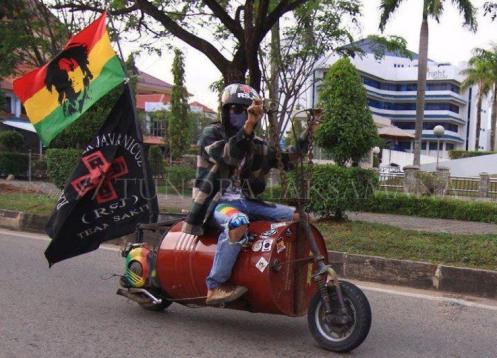
Selain yang “kumuh” tersebut sebenarnya masih lebih banyak modifikasi yang menghasilkan motor yang cantik, unik dan elegan, contohnya seperti dibawah ini :
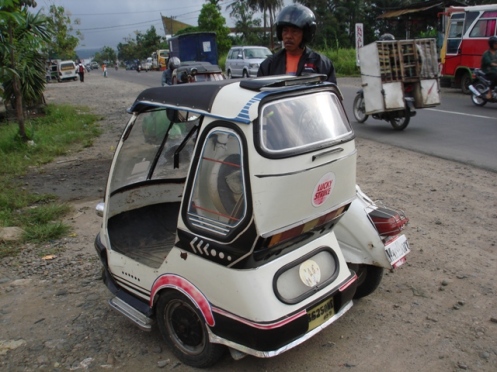


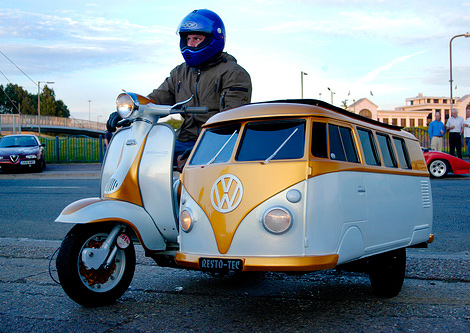


Apapun bentuk modifikasinya kecintaan mereka terhadap tunggangannya patut diacungi jempol. Vespa tidak sekedar alat transportasi tetapi telah menjadi saksi bisu perjalanan hidup penunggangnya baik suka maupun duka.
Punya pendapat lain? silahkan dishare …
Free Template Blogger collection template Hot Deals BERITA_wongANteng SEO theproperty-developer
Diposting oleh
Kukuh Timet
di
18.37
0
komentar
Kirimkan Ini lewat Email
BlogThis!
Berbagi ke Twitter
Berbagi ke Facebook

Newer styles and spin-offs
Hip hop and rap
Toasting is a style of talking over music, making heavy use of rhythmic phrasing and rhyme patterns, that was developed in the 1950s by Jamaican disc jockeys looking to add excitement to the mainly American R&B records they played in outdoor venues, called "lawns", and dancehalls. This style was developed by pioneers Count Machuki, King Stitt and Sir Lord Comic who took the current style of introducing and speaking over records played by sound systems and developed it into a unique style. As ska moved to rocksteady, this style of vocals gained a wider audience among Jamaican listeners. One of the earliest examples of this style is Sir Lord Comic's 1966 recording, "The Great Wuga Wuga". This style finally gained chart topping popularity in the late 1960s with deejays such as U-Roy and Dennis Alcapone scoring numerous hits. This style of speaking over records may have had a great impact on a young Jamaican DJ named Kool Herc, who had emigrated to New York City in the late 1960s where he began holding parties in the Bronx. It was Kool Herc's parties and the scene that sprung up around them that is generally credited as birth of hip hop and rap. Mixing techniques developed later in dub music have also influenced hip hop.Free Template Blogger collection template Hot Deals BERITA_wongANteng SEO theproperty-developer
Diposting oleh
Kukuh Timet
di
18.33
0
komentar
Kirimkan Ini lewat Email
BlogThis!
Berbagi ke Twitter
Berbagi ke Facebook

Lovers rock
Main article: Lovers rock
The lovers rock subgenre originated in South London in the mid-1970s. The lyrics are usually about love. It is similar to rhythm and blues. Notable lovers rock artists include: Gregory Isaacs, Freddy McGregor, Dennis Brown, Maxi Priest and Beres Hammond.Free Template Blogger collection template Hot Deals BERITA_wongANteng SEO theproperty-developer
Diposting oleh
Kukuh Timet
di
18.32
0
komentar
Kirimkan Ini lewat Email
BlogThis!
Berbagi ke Twitter
Berbagi ke Facebook

Rockers
The term "rockers" refers to a particular sound of roots reggae, pioneered in the mid-1970s by Sly & Robbie, and very popular in the late seventies. Rockers is best described as a somewhat more mechanical and aggressive style of playing reggae[26] with a greater use of syncopated drum patterns.Free Template Blogger collection template Hot Deals BERITA_wongANteng SEO theproperty-developer
Diposting oleh
Kukuh Timet
di
18.32
0
komentar
Kirimkan Ini lewat Email
BlogThis!
Berbagi ke Twitter
Berbagi ke Facebook

Dub
Main article: Dub music
Dub is a genre of reggae that was pioneered in the early days by studio producers Lee 'Scratch' Perry and King Tubby.
It involves extensive remixing of recorded material, and particular
emphasis is placed on the drum and bass line. The techniques used
resulted in an even more visceral feel described by King Tubby as
sounding "jus’ like a volcano in yuh head."[25] Augustus Pablo and Mikey Dread were two of the early notable proponents of this music style, which continues today.Free Template Blogger collection template Hot Deals BERITA_wongANteng SEO theproperty-developer
Diposting oleh
Kukuh Timet
di
18.31
0
komentar
Kirimkan Ini lewat Email
BlogThis!
Berbagi ke Twitter
Berbagi ke Facebook

Roots reggae
Main article: Roots reggae
Roots reggae usually refers to the most recognizable kind of reggae, popularized internationally by artists like Bob Marley and Peter Tosh,
which dominated Jamaican recordings from around 1972 into the early
1980s. While there are distinct musical characteristics to this era of
reggae music, the term "roots" often implies more the message of the
music than specifically its musical style and is still often used today
to refer either to a musical style/sub-genre or to give context to an
artists music that may, in fact, cover several sub-genres of reggae.
Roots reggae, in this descriptive sense, can be typified by lyrics
grounded in the Rastafarian movement's "Back to Africa" message, equation of colonialism and slavery with the Biblical captivity in Babylon, and, of course, the belief in one living God, Jah, manifested as Ethiopia's Emperor Haile Selassie. Recurrent lyrical themes include poverty and resistance to economic and racial oppression as well as more poetic meditations on spiritual or topical themes.Musically, the "roots" sound and era have a number of distinct features. Drummers developed more complex kick drum patterns based around the "one drop" of rocksteady and incorporated influences from funk and R&B. The guitar, piano and keyboard patterns in the music were refined from the creative explorations of the early reggae era into the patterns most recognizable as reggae throughout the world. Simple chord progressions were often used to create a meditative feeling to compliment the lyrical content of the songs. This refining of rhythmic patterns and simplification of chord progressions brought the bass guitar entirely to the forefront, helping to make bass one of the most definitive features of reggae as a genre. Producer/engineers like King Tubby, Lee "Scratch" Perry and Prince Jammy (before he became a king) also played a large role in the development of the roots sound, with their heavy use of tape delay and reverb effects becoming one of the most recognizable features of the music. The roots sound can be best identified in the Jamaican recordings of the late 1970s by artists such as Burning Spear, Max Romeo, The Abyssinians, Culture and Israel Vibration.
Free Template Blogger collection template Hot Deals BERITA_wongANteng SEO theproperty-developer
Diposting oleh
Kukuh Timet
di
18.30
0
komentar
Kirimkan Ini lewat Email
BlogThis!
Berbagi ke Twitter
Berbagi ke Facebook

Early reggae
The "early reggae" era can be looked as starting in roughly 1968. The influence of funk music from American record labels such as Stax began to permeate the music style of studio musicians and the slowing in tempo that occurred with the development of rocksteady had allowed musicians more space to experiment with different rhythmic patterns. One of the developments which separated early reggae from rocksteady was the "bubble" organ pattern, a percussive style of playing that showcased the eighth-note subdivision within the groove.The guitar "skanks" on the second and fourth beat of the bar began to be replaced by a strumming pattern similar to mento and the so-called double chop that can be heard so audibly in the introduction of Bob Marley's "Stir It Up" was developed during this time. More emphasis was put on the groove of the music, and there was a growing trend of recording a "version" on the B-side of a single. The mass popularity of instrumental music in the ska and rocksteady eras continued in reggae, producing some of the most memorable recordings of the early reggae era. Cover versions of Motown, Stax and Atlantic Records soul songs remained popular in early reggae, often helping Jamaican artists gain a foothold in foreign markets such as the UK
As a testament to its far reaching impact in other markets, this era and sound of reggae is sometimes referred to in retrospect as "skinhead reggae" because of its popularity among the working class skinhead subculture in the UK during the late 1960s and early 1970s. One Caribbean band based in London, The Pyramids, even released an entire album dedicated to the unruly English youth culture under the name Symarip which featured songs such as "Skinhead Moonstomp" and "Skinhead Girl". Eventually the, often experimental, sounds of early reggae gave way to the more refined sound made popular by Bob Marley's most famous recordings. Indeed this era seems fittingly capped off by the 1973 release of "Catch A Fire". Notable artists from this era include John Holt, Toots & the Maytals and The Pioneers.
Free Template Blogger collection template Hot Deals BERITA_wongANteng SEO theproperty-developer
Diposting oleh
Kukuh Timet
di
18.30
0
komentar
Kirimkan Ini lewat Email
BlogThis!
Berbagi ke Twitter
Berbagi ke Facebook

Subgenres
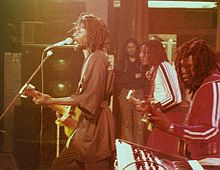
Peter Tosh performing with his band in 1978.
Main article: Reggae genres
Free Template Blogger collection template Hot Deals BERITA_wongANteng SEO theproperty-developer
Diposting oleh
Kukuh Timet
di
18.29
0
komentar
Kirimkan Ini lewat Email
BlogThis!
Berbagi ke Twitter
Berbagi ke Facebook

Vocals
The vocals in reggae are less of a defining characteristic of the genre than the instrumentation and rhythm, as almost any song can be performed in a reggae style. However, it is very common for reggae to be sung in Jamaican Patois, Jamaican English, and Iyaric dialects. Vocal harmony parts are often used, either throughout the melody (as with vocal groups such as the Mighty Diamonds), or as a counterpoint to the main vocal line (as with the backing vocalists, the I-Threes). More complex vocal arrangements can be found in the works of groups like The Abyssinians and British reggae band Steel Pulse.An unusual aspect of reggae singing is that many singers use tremolo (volume oscillation) rather than vibrato (pitch oscillation). Notable exponents of this technique include Horace Andy and vocal group Israel Vibration. The toasting vocal style is unique to reggae, originating when DJs improvised spoken introductions to songs (or "toasts") to the point where it became a distinct rhythmic vocal style, and is generally considered to be a precursor to rap. It differs from rap mainly in that it is generally melodic, while rap is generally more a spoken form without melodic content.
Lyrical themes
Reggae is noted for its tradition of social criticism in its lyrics, although many reggae songs discuss lighter, more personal subjects, such as love and socializing. Many early reggae bands covered Motown or Atlantic soul and funk songs. Some reggae lyrics attempt to raise the political consciousness of the audience, such as by criticizing materialism, or by informing the listener about controversial subjects such as Apartheid. Many reggae songs promote the use of cannabis (also known as herb, ganja, or sinsemilla), considered a sacrament in the Rastafari movement. There are many artists who utilize religious themes in their music — whether it be discussing a specific religious topic, or simply giving praise to God (Jah). Other common socio-political topics in reggae songs include black nationalism, anti-racism, anti-colonialism,[15] anti-capitalism and criticism of political systems and "Babylon".Criticism of dancehall and ragga lyrics
See also: Stop Murder Music
Some dancehall and ragga artists have been criticised for homophobia,[16][17] including threats of violence.[18] Buju Banton's
song "Boom Bye-Bye" states that gays "haffi dead". Other notable
dancehall artists who have been accused of homophobia include Elephant Man, Bounty Killer and Beenie Man.
The controversy surrounding anti-gay lyrics has led to the cancellation
of UK tours by Beenie Man and Sizzla. Toronto, Canada has also seen the
cancellation of concerts due to artists such as Elephant Man and Sizzla
refusing to conform to similar censorship pressures.[19][20]After lobbying from the Stop Murder Music coalition, the dancehall music industry agreed in 2005 to stop releasing songs that promote hatred and violence against gay people.[21][22] In June 2007, Beenie Man, Sizzla and Capleton signed up to the Reggae Compassionate Act, in a deal brokered with top dancehall promoters and Stop Murder Music activists. They renounced homophobia and agreed to "not make statements or perform songs that incite hatred or violence against anyone from any community". Five artists targeted by the anti-homophobia campaign did not sign up to the act, including Elephant Man, TOK, Bounty Killa and Vybz Kartel.[23] Buju Banton and Beenie Man both gained positive press coverage around the world for publicly renouncing homophobia by signing the Reggae Compassion Act. However, both of these artists have since denied any involvement in anti-homophobia work and both deny having signed any such act.[24]
Free Template Blogger collection template Hot Deals BERITA_wongANteng SEO theproperty-developer
Diposting oleh
Kukuh Timet
di
18.28
0
komentar
Kirimkan Ini lewat Email
BlogThis!
Berbagi ke Twitter
Berbagi ke Facebook

Langganan:
Postingan (Atom)





